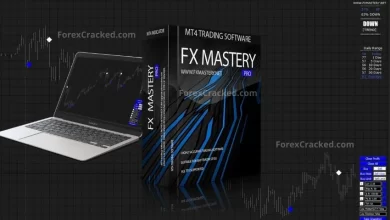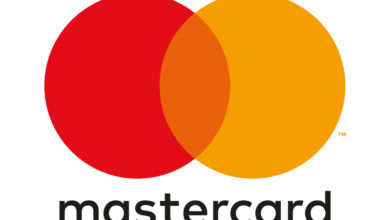Unlocking Potential: The Essentials of CFD Trading

Contracts for Difference (CFDs) stand as a financial instrument that brings abundance to those who have mastered its mechanics and acumen. CFD trading allows investors to speculate on the rising or falling prices of fast-moving global financial markets or instruments such as shares, indices, commodities, currencies, and more – without actually owning the underlying asset. It’s a double-edged sword, however; with high leverage, considerable gains come with the risk of significant losses. In this comprehensive guide, we’ll dissect the essentials of CFD trading, map out risk management strategies, and chart a course to harness its potential.
The ABCs of CFDs
Learning the lingo around CFD trading is essential before diving headfirst into this complex financial activity. Therefore, the moniker “Contract for Differences.” In essence, contracts for varying financial asset values between the opening and closing dates of the contract constitute CFDs. Leverage is a crucial idea in CFDs and should be comprehended first. It magnifies both potential gains and potential losses, effectively amplifying the smallest market movement. By using advantage, traders can free up funds by simply having to deposit just a fraction of the trade’s apply value.
A trader who recognises the workings of CFDs, those intricate financial products, gains the opportunity to profit from market in any possible direction. However, immense strength also comes with immense responsibility; everything needs to be used correctly to yield the desired effects.
A for Assets and Analysis
Choosing the right asset to trade is similar to determining the area of the battlefield to fight on. There are many assets available for trading using CFDs, but it’s vital to choose ones that correspond with your trading style, knowledge, and comprehension of the market. Use basic and technical analysis to arrive at informed decisions. While basic analysis closely examines corporate financial statements and macroeconomic variables to assess value of assets, technical analysis uses historical price data and market indicators in order to forecast future price movements.
B for Broker and Board
A The foundation of your derivatives trading career is an honest broker. Examine and contrast various brokers with respect to their past performance history, costs, level of customer support, and the trading tools that they provide. The controls centre is the investment platform, which offers charts, real-time data on the markets, and analytical tools. Ensure it’s robust, user-friendly, and stable.
C for Charts, Candles, and Charts (Yes, Again!)
Charts are to traders what musical notes are to composers. They build melodies—or in this case, strategies—by interpreting patterns and forming the basis of trading decisions. Candlestick charts, with their visual representation of price patterns, are particularly popular among CFD traders. Master chart reading to recognize trend lines, support, and resistance levels, and other technical indicators that dictate market sentiment and potential entry or exit points.
The Warrior’s Arsenal
Every warrior—or CFD trader—requires the right set of tools for success. The arsenal should be equipped with an array of analysis tools, from moving averages to stochastic oscillators. Each tool has a specific purpose, from trend identification to volatility measurement, giving you a more complete picture of the battlefield.
Risk Factor and Position Sizing
Before entering battle, assess the risk. Position sizing, which can be affected by your account size, stop-loss level, and risk tolerance, defines how much you will wager on a single transaction. It’s the skill of evaluating advantages and possible drawbacks. Avoid using a lot of leverage. Although leverage can increase profits, it may additionally boost losses. Never take on more risk than you can bear to lose, as an overall rule of thumb.
Limit and Stop Orders
Your impenetrable fortress is a stop-loss order, which simply closes your stake at a predetermined price to stop additional losses. Limit orders, on the other hand, immediately terminate a trade when the market reaches an established in advance price, locking in the winnings. Utilize these orders religiously to manage risk and secure gains.
Trading Psychology
The trader’s thinking is his most valuable asset and his deadliest enemy. It is essential to develop psychological resilience. Remain disciplined, adhere to your schedule, and refuse to give in to greed or fear. By keeping a trading log, you are able to track your choices and what outcomes they produce, which will assist you develop a more considered strategy over time.
Crafting an Effective Approach
A sound plan will be required for success in CFD trading. Although there isn’t a single strategy which is effective for everyone, several stand out for being especially efficient at controlling risk and optimising returns.
Trend Following
The basic concept of trend following is the idea that markets follow trends. Trading successfully may come from recognising and adhering to these inclinations. Using indicators to verify the potency of the trend before opening an order, this method entails trading in the upward trajectory of the current pattern.
Breakout Trading
Breakout trading is about capitalizing on volatility. When the price breaks through a significant support or resistance level, it often signals a significant move. The breakout trader’s challenge lies in effectively filtering genuine breakouts from false ones.
Range Trading
Markets often oscillate within a range—trading between support and resistance. Range traders wait for the upper and lower boundaries to hold, then buy or sell near these levels, aiming to profit from the price bouncing between them.
Hedging
Hedging involves opening a position to offset potential losses in another position. While more advanced, hedging strategies can be powerful risk management tools, particularly in times of uncertainty or when a position holds significant risk.
The Art of Continuous Learning
The path to mastering CFD trading is paved with continual learning. Strategies wax and wane, markets shift and only those who can adjust and improve their approach to success remain. Keep up with current events and trends in the market, broaden your perspectives with books, seminars, and courses of study, and connect with other traders to obtain perspectives and insights.
Conclusion
Contracts for Difference, with their promise of high returns and versatility, are an alluring proposition. But they require dedication, caution, and a keen appreciation of the market’s dynamics. Mastering the essentials—the ABCs, the tools, the strategies—is the first step in wielding CFDs to unlock your potential as a trader. Remember, the markets are an unforgiving terrain, and only the prepared and persistent emerge victorious. Happy trading, and may the trends be forever in your favor.


